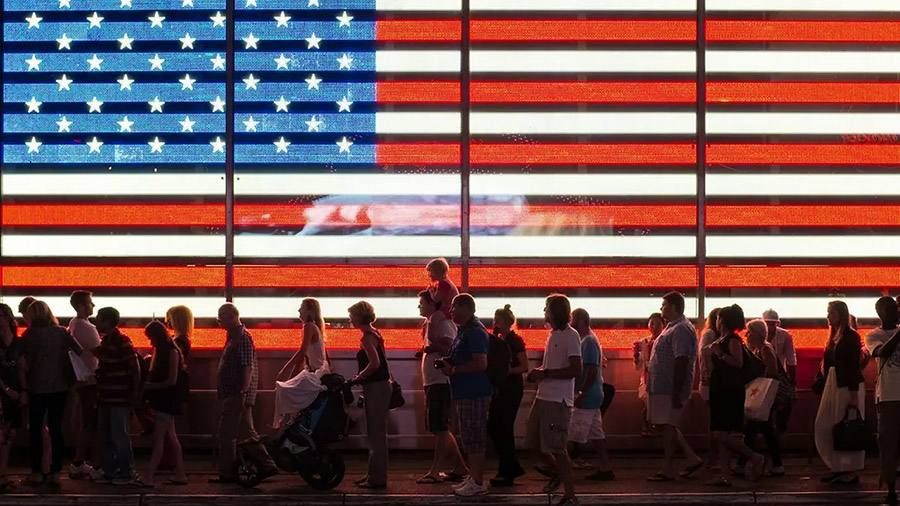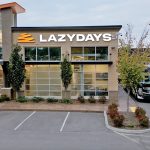The National Retail Federation’s (NRF) chief economist said that tariffs imposed by President Trump have not yet led the U.S. into a recession, but concerns for the economy are widespread and growing despite continued job growth and income gains.
“The possibility of a U.S. recession in the near future has increased due to rising trade tensions and other economic factors, but it hasn’t happened yet,” NRF Chief Economist Kleinhenz opined. A set of Federal Reserve indexes that measure state-level economic data shows increases in 43 states and decreases in only three as of April, rather than the negative growth in at least half that would be considered an indicator of recession-like conditions.
Nonetheless, the NRF’s Chief Econ honcho said, “What will happen going forward is difficult to predict.”
“With so much uncertainty surrounding the economy in the past few months, I’m not sure anyone can predict the storm path of tariffs and their likely impact,“ Kleinhenz said. “The wide range of uncertainty has introduced a high level of unpredictability and has raised the probability of a significantly slower pace for the U.S. economy. Hiring, unemployment, spending, and inflation data continue in the right direction, but at a slower pace. Everyone is worried, and a lot of people have recession on their minds.“
Kleinhenz’s comments came in the May Edition of the NRF’s Monthly Economic Review, which reported the economy is “at a pivot point“ after ending 2024 with 2.8 percent year-over-year gross domestic product growth and falling inflation.
People may have recession on their minds because of the constant negative drumbeat, particularly from the national media and trade associations representing brands and retailers, that the country was heading for recession. Trump has to take some responsibility for the talk as well, as the conflicting messages and usual bluster coming out of the White House have created, or exacerbated, the feelings of uncertainty many in the market are feeling.
The NRF said in its May report that GDP contracted at an annualized rate of 0.3 percent in the first quarter, marking the end of 11 consecutive quarters of growth and expansion in 36 of the last 40 quarters. The sudden reversal “has heightened fears of a recession,“ and the economy has lost momentum, but the data “is not yet consistent with a typical downturn,“ Kleinhenz said. Instead, the top-line GDP figures “overstate the weakness in the economy“ and primarily result from a surge in imports during the first quarter as consumers and businesses tried to get ahead of tariffs announced in April, Kleinhenz said.
In contrast, overall personal spending grew stronger than expected at 1.8 percent year-over-year during the first quarter. Private final sales to domestic purchasers, a measurement focusing on consumer and business spending, were up 3.1 percent following a 2.2 percent gain in the prior quarter, suggesting a relatively steady pace of growth. Driven in part by pre-tariff purchasing, consumer spending on goods was up 4.1 percent from a year earlier in March, while spending on services rose 6.3 percent.
Overall, the labor market continues to perform better than expected following the tariff announcements. Employers added 177,00 jobs in April, and the unemployment rate remained unchanged at 4.2 percent. Disposable personal income, income after taxes, was up 4 percent from a year ago in March.
On the inflation front, the Personal Consumption Expenditures Price Index, the key indicator used by the Federal Reserve, showed prices were up 2.3 percent year-over-year in March. The Employment Cost Index measure of wages, salaries and other employment costs was up 3.6 percent year-over-year in the first quarter, which exceeded inflation but was nonetheless the slowest growth in four years.
Despite data that shows the economy “remains in a buoyant mode,“ the Fed’s latest Beige Book report found “uncertainty around international trade policy was pervasive“ in all 12 Federal Reserve districts nationwide.
“Well-established economic theory is very clear that tariffs raise prices for consumers, distort investments and reduce the competitiveness of firms that use non-U.S. parts, materials and other inputs,“ Kleinhenz said. “I remain concerned that the sporadic implementation of tariffs announced one day, postponed the next and maybe — or maybe not — finally imposed later is weighing on business investment and hiring, likely leading to a weak labor market that will be harmful. People are on an economic cusp, and when people worry about their jobs, their anxiety often triggers a slowdown in consumer spending.”
Download a copy of the NRF’s Monthly Economic Review, May Edition, here.
















